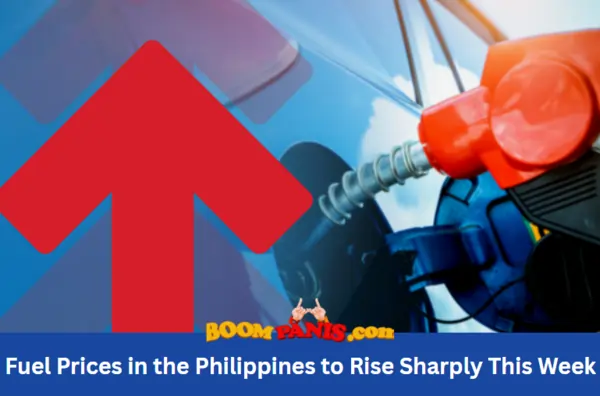Diesel up by ₱5, gasoline by ₱3.50—DOE urges Filipinos to prepare as global oil tensions impact local prices.

📰 Oil Price Hike Philippines: Fuel Costs to Surge Starting June 25, 2025
Metro Manila, Philippines — June 24, 2025
Fuel prices in the Philippines are set to rise sharply beginning Tuesday, June 25, 2025. The Department of Energy (DOE) has confirmed that the new adjustments will affect all fuel types.
Gasoline prices will increase by ₱3.50 per liter, diesel by ₱5.00 per liter, and kerosene by ₱4.80 per liter. This upcoming oil price hike in the Philippines is expected to have wide-ranging effects across transportation, household expenses, and inflation.
Why Fuel Prices Are Increasing
Several global and local economic factors are behind this significant fuel price adjustment. One major reason is the ongoing conflict in the Middle East, which has disrupted global oil supply chains. This disruption has caused a spike in global oil prices, pushing crude benchmarks close to $80 per barrel.
Another contributing factor is the depreciation of the Philippine peso. Since oil is traded internationally in U.S. dollars, a weaker peso directly translates to higher import costs for local fuel providers. Additionally, speculative trading in global markets has further increased the cost of crude oil, worsening the impact on local pump prices.
How the Oil Price Hike Affects Filipinos
The oil price hike Philippines is expected to hit the public transport sector first. Jeepney and tricycle drivers will bear the brunt of the rising fuel costs, prompting discussions about possible fare increases. These conversations are currently ongoing between transport groups and regulatory agencies.
Households should also expect a ripple effect. As logistics and delivery services adjust to higher fuel expenses, the prices of basic goods, groceries, and services are likely to go up. Economists warn that this price hike could raise the country’s inflation rate by up to 0.8 percentage points. This means Filipinos may feel the impact not just at the pump, but in their daily spending as well.
What the Government Is Doing About It
In response to the impending fuel price increase, the government is taking steps to ease its effects. The Department of Energy is working closely with the Department of Transportation and the Department of Agriculture to implement targeted solutions. One proposed measure includes financial subsidies for public utility vehicle (PUV) drivers and farmers, two sectors most vulnerable to fuel cost fluctuations.
Moreover, oil companies have agreed to stagger the implementation of the new prices. This phased approach is aimed at reducing the immediate financial strain on consumers while ensuring continued supply.
Tips to Lessen the Impact of the Oil Price Hike
To reduce the financial burden, consumers are encouraged to take proactive measures. First, it is advisable to refuel vehicles before the new prices take effect on June 25. Early refueling can result in significant savings, especially for those with long commutes or travel plans.
Carpooling is another practical way to lower daily transportation costs. Sharing rides with friends, family, or coworkers can reduce fuel consumption and expenses. Households are also advised to revisit their monthly budgets. By prioritizing essential spending and minimizing non-essential purchases, families can better manage the impact of rising fuel prices on their finances.
Summary of New Fuel Prices
The table below summarizes the scheduled price increase per fuel type:
| Fuel Type | Price Increase |
|---|---|
| Gasoline | ₱3.50 per liter |
| Diesel | ₱5.00 per liter |
| Kerosene | ₱4.80 per liter |
These changes will take effect nationwide on June 25, 2025.
What to Expect in the Weeks Ahead
According to the DOE, fuel prices in the Philippines may remain volatile in the coming weeks. If global conflicts escalate further or if the peso continues to weaken, more price hikes could follow. The agency has assured the public that it will continue to monitor global oil movements and exchange rate trends closely.
In the meantime, government officials are studying long-term strategies to stabilize oil prices and protect consumers. These include supply diversification, enhanced local fuel reserves, and expanding access to clean and renewable energy options.
📚 References
- Oil firms agree to staggered fuel price hikes: Energy dept – ABS‑CBN
- Govt readies fuel subsidy program – The Manila Times

Bianca Marie Reyes, aka Tita BoomBi, is a 30-year-old Filipina content creator who turns everyday chika into real talk and real-time news. Known for her witty takes and no-fake-news style, she breaks down viral stories, headlines, and public updates into fun, bite-sized content for the digital Filipino. She’s your online tita, always tuned in and always telling it like it is. With a mix of humour and honesty, she keeps things relevant, relatable, and 100% not fake.
